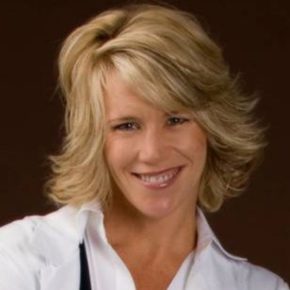When I was in my twenties, I could never understand why, during the first 5 minutes of warm-up in almost all of my group exercise classes, about six or so women would inevitably race for the bathroom door. I remember thinking, Why didn’t they just go before class? They always came back to finish their workout, so I never took it personally or gave it much thought beyond that.
The subject of urinary incontinence recently came up again, this time during a session comprised of a small group of men and women of various ages. Our conversation made me realize it’s a bigger, more prevalent problem than I ever appreciated. It’s just one of those problems that most people keep secret.
Being a personal trainer I learn a lot about people. Clients confide things to me even their own spouses don’t know about them. Things they might not feel comfortable bringing up at the dinner table. Or over coffee. Or ever.
Let’s get it out there and in the open, shall we?

Since I would never claim to be an expert on the subject, I decided to consult with someone who is. Dr. Holly Lucille, an acclaimed expert in the field of integrative medicine, took time away from her busy schedule (which includes hosting her popular nationally-televised talk show Myth-Defying With Dr. Holly) to sit down with 303 Magazine in an effort to help demystify the topic of incontinence and bladder health.
303 Magazine: What causes incontinence or bladder weakness?
Dr. Holly: There are many causes, and as a naturopath doctor it is important to identify and treat the underlying cause in each individual. Anything from food sensitivities, prostate issues, an undetected tumor, muscle weakness, hormonal imbalances and frequent infections can contribute to this issue.
Who is affected?
Both men and women [are affected]. It mostly affect women, but one-third of men from the age of 30-70 have experienced symptoms. Currently about 25 million Americans deal with Overactive Bladder (OAB).
I thought only women who have had babies have this problem?
Oh, not at all. Men and women… mostly women after menopause, but it really is an equal opportunity issue in a sense.
A wild plant that grows in Iceland called Arctic Angelica has recently made a name for itself for its ability to treat overactive bladder. Containing numerous essential compounds such as isoquercitrin and other flavonoids, polyphenols and polysaccharides, this plant is showing promise in strengthening the muscles in the bladder as well as the walls surrounding the bladder.
How does Arctic Angelica help with bladder health?
It is the best, and we have documented studies to back that up. One of the things I can’t stand about conventional medications in this category are the side effects. Why risk them when there is something like Angelica that is effective without the trouble? I use a product called SagaPro and what we are seeing at the end of the day is an increase in bladder capacity. The researchers believe this is at least partly due to a component of the plant that stops the spasms and contractions, allowing the bladder to relax and fill.
Are there also exercises we can do to prevent this problem?
Well, prevention is always the cure and certainly things like Kegel exercises, fluid monitoring, increased circulation to the area and overall optimal health can prevent this issue as we age.
Although a potentially embarrassing topic of discussion, it’s clear that too many people are suffering in silence. Instead of retiring that jumprope or avoiding your favorite step aerobics class, talk with someone you trust and proactively get answers. I hope that some of Dr. Holly’s advice will help you.
 Jodilyn Stuart is the Health & Sports Senior Staff Writer for 303 Magazine, owner of ModaBody Fitness, and has been a professional fitness geek since 1997. If you have questions, feel free to email at: Jodilyn@303Magazine.com
Jodilyn Stuart is the Health & Sports Senior Staff Writer for 303 Magazine, owner of ModaBody Fitness, and has been a professional fitness geek since 1997. If you have questions, feel free to email at: Jodilyn@303Magazine.com






Article on SagaPro…